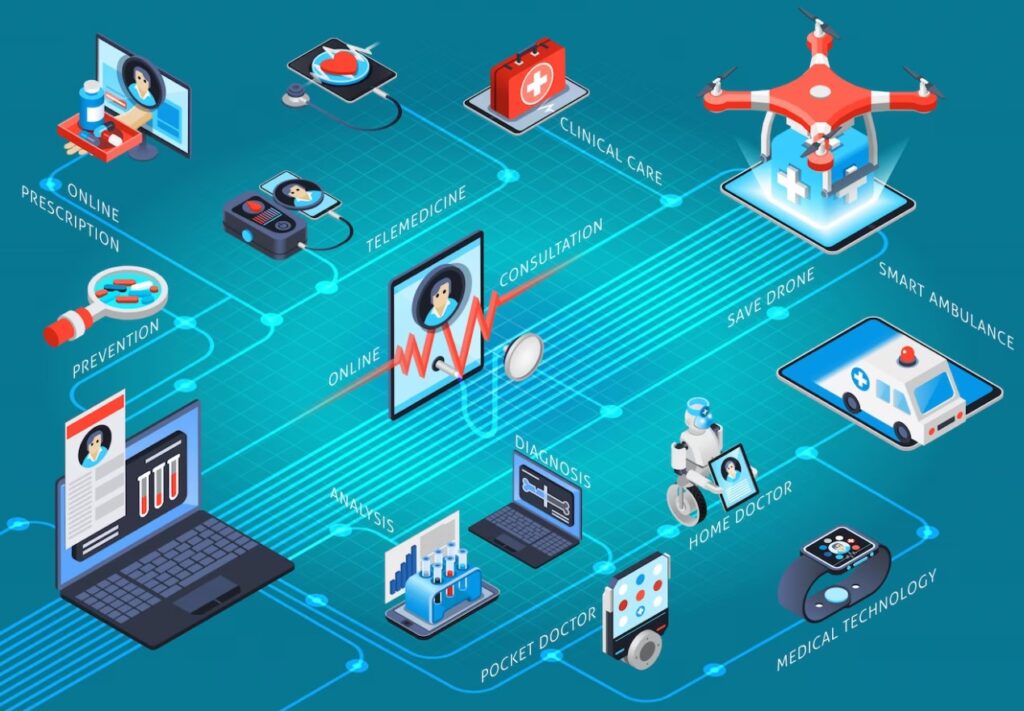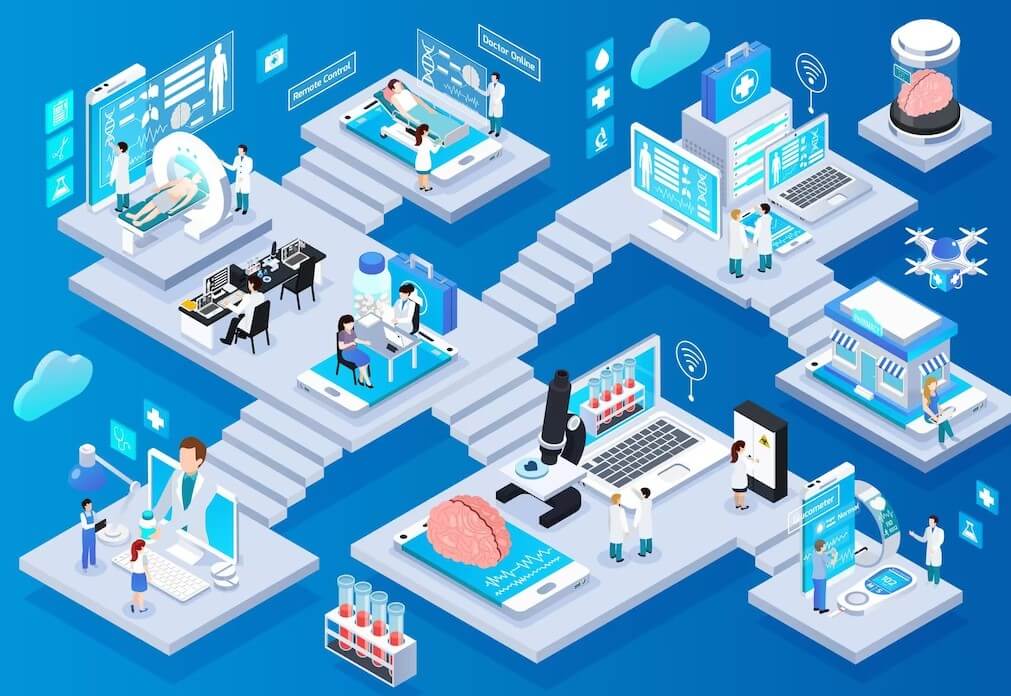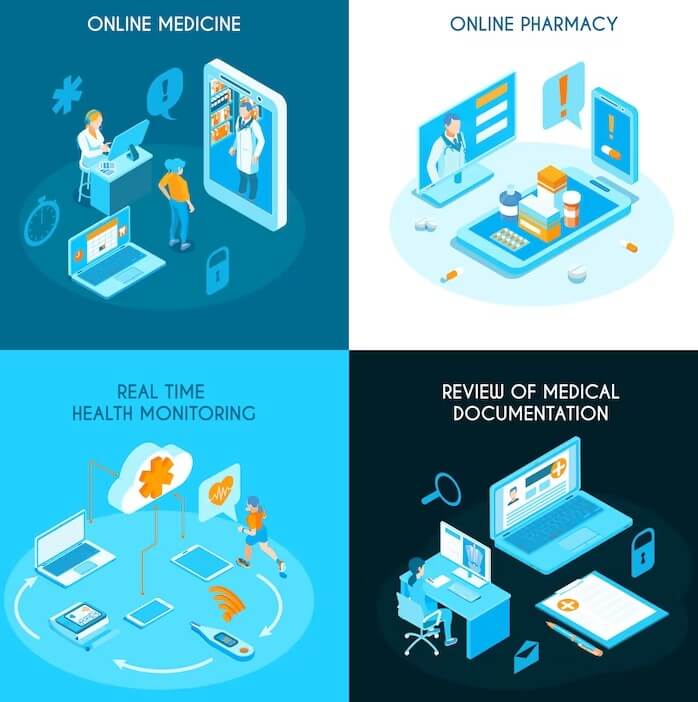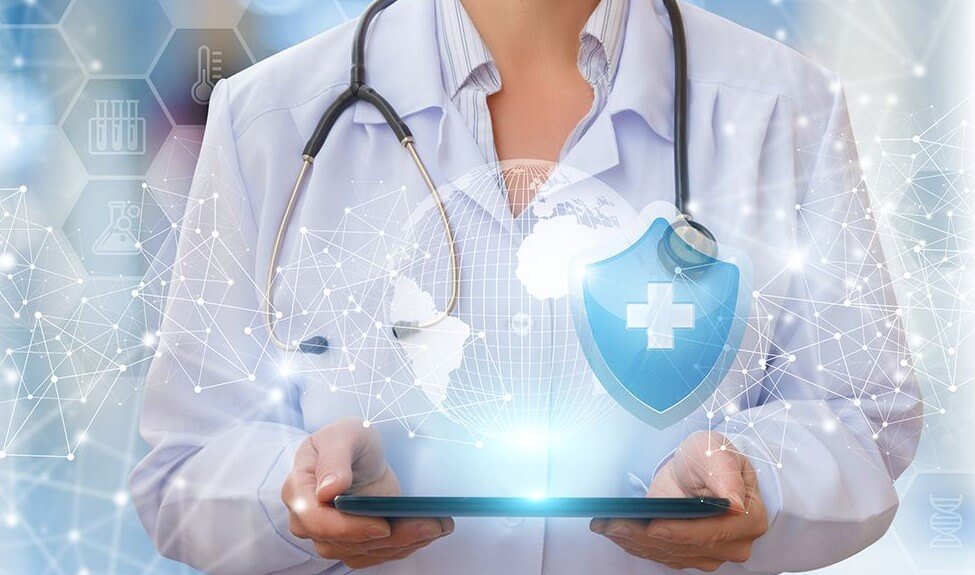The introduction of IoT in Healthcare – Innovation continues to play a significant role in transforming the medical industry, which is constantly evolving. The recent integration of the Web of Things ioT in healthcare frameworks is perhaps the most hopeful development. By improving patient care, advancing expertise, and reducing costs, IoT has the potential to disrupt the medical industry. We will delve deep into the world of medical IoT in this comprehensive guide, looking at its uses, benefits, challenges, and potential in the future.
What is Medical care IoT? how does IoT in healthcare work?

Health services IoT, or the Web of Clinical Things (IoMT), refers to the collection, exchange, and analysis of medical information via clinical devices and applications that are networked together. These devices, which range from simple wearable health trackers to sophisticated clinical technology, are all designed to scan and send vital health data.
- Applications of IoT in Healthcare
1. Extensive IoT-enabled wearable devices, such as smartwatches and fitness trackers, enable patients to quietly monitor key body processes from the comfort of their homes, such as their heart rate, blood pressure, and blood sugar levels. Suppliers of medical services have access to continuous information, enabling them to monitor patients’ conditions and swiftly mediate in emergency situations.
2. Persistent Illness The board – Patients with chronic illnesses, such as diabetes and hypertension, can benefit from IoT devices that provide continuous observation and send alerts presuming any boundaries escape from the usual reach. The reduction in hospitalizations and misunderstanding is a result of this proactive approach.
3. Prescription Adherence – Internet of Things (IoT)-connected pill containers encourage patients to take as much time as necessary. Experts in medical services can monitor patient adherence to medication and, if necessary, mediate, improving therapeutic outcomes.
4. A Resource on Emergency Rooms A medical clinic’s imbuement siphons and ventilators, for example, can be monitored for location and condition using the board-level IoT in Healthcare (IoT) technology. By doing this, equipment loss is reduced, maintenance planning is improved, and it is ensured that essential devices are always available when needed.
5. Telemedicine and Virtual Counsels – IoT supports telemedicine by facilitating conversations between patients and providers of medical treatment at a distance. This is particularly crucial in rural or underdeveloped areas where access to medical care offices may be limited.
Advantages of IoT in Healthcare

1. Improved Patient Consideration – Constant observation and data analysis take into account early intervention and individualized treatment strategies. More significant patient control over their health leads to more advanced outcomes.
2. Proficiency and Cost Reduction – IoT improves the efficiency and cost-effectiveness of medical services by automating tasks, reducing administrative work, and reducing errors. Medical service offices can increase assets and reduce unnecessary emergency clinic readmissions.
3. Information-focused separate direction Medical care providers can make educated decisions in light of data acquired from IoT devices. Patterns and potential health risks can be identified using predictive analysis and AI algorithms.
4. Developed an understanding of the experience – IoT-enabled devices provide patients with comfort and accommodation, reducing the need for repeated trips to the emergency room. Effective patient participation in their care leads to more certain medical understanding.
Problems and Concerns of IoT in Healthcare

IoT in healthcare contains sensitive patient information, with a focus on network Information Security and Protection. To protect patient data, it is essential to use strong encryption, access limits, and regular security audits.
2. Interoperability – IoT devices from different manufacturers may use differing conventions, impeding information exchange. To tackle this problem, normalization efforts are moving forward.
3. Administrative Consistency – Medical IoT should adhere to strict administrative requirements, such as HIPAA in the US. Consistency can be difficult, especially for startups and less sophisticated healthcare providers.
4. Dependability and Availability – In remote or underserved areas, relying on network availability might present challenges.For continuous observation, ensuring consistent availability is essential.
Medical Services’ Potential in the Future IoT in Healthcare

Medical care’s future Massive commitment is made to IoT. Observe the following significant advancements:
1. Artificial intelligence and AI Reconciliation – Man-made intelligence-driven computations will become increasingly accurate in identifying diseases and predicting health outcomes.
2. 5G Innovation – With the rollout of 5G networks, availability will be improved, making continuing observation much more transparent and reliable.
3. Blockchain for Information Security – Blockchain technology can be used to collect patient information, ensuring security and reliability.
4. Personalised Medication – IoT will enable the delivery of highly personalized medical care, tailored to each person’s unique needs.
Services for health By focusing on improving knowledge of consideration, increasing productivity, and lowering costs, IoT is prepared to transform the medical care sector. Although it opens up many opportunities, it also has drawbacks, particularly regarding information security and administrative consistency. With an emphasis on greater persistent results and a more associated and effective medical services environment, the future of medical services appears optimistic as innovation continues to advance and medical care providers embrace IoT arrangements.
Upsides and drawbacks of Reforming Medical services with IoT: A Thorough Examination
The compromising of the Internet of Things (IoT) into clinical consideration, known as Clinical advantages IoT or IoMT, has collected significant thought for transforming the clinical consideration business potential. Regardless, like any mechanical movement, it has two advantages and disadvantages. In this web crawler structured post, we will discuss the potential gains and cons of changing clinical benefits using IoT.
Aces of Clinical Consideration IoT in Healthcare
1. Improved Patient Consideration: – Worked on tolerant mind with IoT Clinical consideration IoT considers constant checking of patients, engaging in early intervention, and updating treatment strategies.
2. Productivity and Cost Decrease: – Capability and cost fall with Clinical benefits IoT – IoT streamlines clinical benefits exercises, robotizing activities, minimizing authoritative effort, and restricting mix-ups, finally provoking expenditure speculation reserves.
3. Information-driven Decision Making: – Data-driven clinical benefits decisions with IoTClinical benefits providers can go with knowledgeable decisions in view of data built from IoT devices, chipping away at grasping outcomes.
4. Worked on silent Insight: – Worked on silent insight through IoT – IoT contraptions offer ease and comfort to patients, lowering the necessity for progressive facility visits and permitting patients to genuinely engage in their treatment.
Cons of Clinical Benefits IoT in Healthcare
1. Information Security and Insurance Concerns: – Data security and assurance problems in Clinical benefits IoT – The tricky concept of patient data presents online assurance concerns, important areas of strength for demanding and access controls.
2. Interoperability Issues: – Interoperability problems in Clinical benefits IoT – IoT gadgets from multiple suppliers could employ incongruent shows, unsatisfactory data sharing, and reliable blend.
3. Administrative Consistence Difficulties: – Authoritative consistency difficulties in Clinical benefits IoT – Clinical consideration IoT ought to follow extreme laws, such as HIPAA in the US, introducing issues for new organizations and more humble clinical consideration providers.
4. Dependability and Accessibility Reliance: – Resolute quality and organization issues in Clinical benefits IoT – IoT contraptions overwhelmingly depend upon network accessibility, which can be volatile in remote or underserved places.
Summary
Changing IoT in Healthcare: A Complete Aide
The essay investigates the remarkable impact of Clinical consideration IoT (IoMT) in the clinical benefits business. It covers numerous purposes of IoT, including far-off tolerant noticing, enduring disease the leaders, medication adherence, facility asset the board, and telemedicine. The benefits of Clinical benefits IoT combine overhauled patient consideration, further produced efficiency, data-driven heading, and a dominating patient experience. In a way, it moreover discusses challenges like data security, interoperability, managerial consistency, and organization issues. The study finishes by outlining the intriguing future prospects of Clinical consideration IoT, similar to PC-based insight blend, 5G advancement, blockchain for data security, and modified medicine.
Upsides and downsides of Upsetting Medical services with IoT
This article presents a web search tool-centered assessment of the possible rewards and cons of incorporating IoT in Healthcare benefits. The virtuosos integrate reworked patient thought, viability, data-driven free bearing, and chipped away at open-minded encounters. On the other hand, it includes drawbacks, for instance, data security and insurance problems, interoperability issues, regulatory consistency obstacles, and dependence on network accessibility. The report highlighted that while Clinical benefits IoT gives different advantages, it additionally goes with huge incites that ought to be tended to as the firm expands.
The two papers together organize a broad perception of Clinical consideration IoT, from its stated benefits to the related hassles, outfitting perusers with a reasonable point of view on this inventive development’s impact on clinical benefits.
End
Clinical benefits IoT might likely revolutionize the clinical consideration sector, supplying benefits, for instance, updated patient thought, adequacy, data-driven approach, and chipping away at lenient experiences.
Nevertheless, it poses hardships, including data security and assurance worries, interoperability issues, regulatory consistency troubles, and dependence on network accessibility. As clinical benefits providers continue to embrace IoT plans and handle these issues, the inescapable destiny of clinical benefits appears empowering, with an accentuation on higher calm results and an additional connected and useful clinical benefits organic framework.
